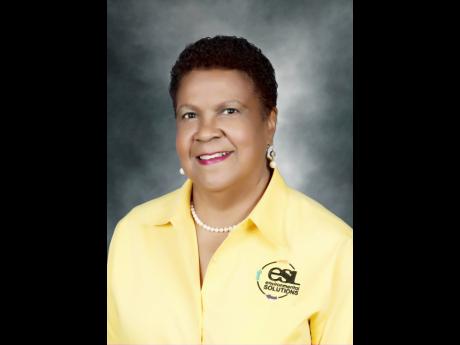Earth Today | Addressing gender realities vital to climate readiness
KEY FEMALE figures from industry and academia have given the Government's move to ensure the participation of women and girls in climate change planning and action the nod, while emphacising that taking stock of gender realities is integral to successful resilience-building for all.
"It is important we understand that consideration of gender is as much about attention to differentiated roles and needs of men and women as it is about equality of opportunity, rights, and privileges. We must, therefore, consider how our men, women, and children need to respond to the impact of a changing climate on health, agriculture, livelihoods, sustain-able quality water supply, and disasters, to name a few areas," said Eleanor Jones, chairman and chief executive officer for Environmental Solutions Limited.
"Climate change is happening now; it is not a future event. We need to think of the role of our women as they head households and care for children. Our men are also heads of households and breadwinners. How should our sensitisation programmes be shaped? Where do our women work? Our men? What should they be cognisant of?" she added.
Dr Leith Dunn, head of the Institute for Gender and Sustainable Development Studies at the University of the West Indies, Mona, said it begins with the research.
"Mainstreaming gender in climate change is vitally important. Collecting and analysing data disaggregated by sex, age, education, social and economic background, disabilities, health status, residence in rural versus urban locations, and other factors can help disaster planners to develop a profile of who is most vulnerable, how, and where," she said.
Getting the message right
"This information can be used to develop targeted messages for vulnerable persons and show them how they can better prepare for the effects of climate change. This can save lives and enable people to secure their livelihoods," Dunn added.
Their comments come in the wake of revelations by the Climate Change Division (CCD) that it had commissioned a review and gender analysis of the island's Climate Change Policy Framework and Action Plan, as part of efforts to realise female empowerment and gender equality in climate change planning.
"We are finalising the paper which we commissioned last year with a view to bringing it in line with the decision of the COP 23 (the 23rd Conference of the Parties to the United Nations Framework Convention on Climate Change held in Bonn, Germany, last year) on the Gender Action Plan," CCD boss UnaMay Gordon told The Gleaner last month.
Judith Wedderburn, one of the paper's authors, said there is no second-guessing the need to ensure the gender-responsive-ness of climate policies and actions.
"We need to focus on the context where people are living and the gendered realities of the women and the men, so that when we get an extreme weather event, for example, we know how those households are going to manage. We can't do the climate change analysis work separate from the gender analysis work, because in the end, we want to protect people and help people cope," she said.



